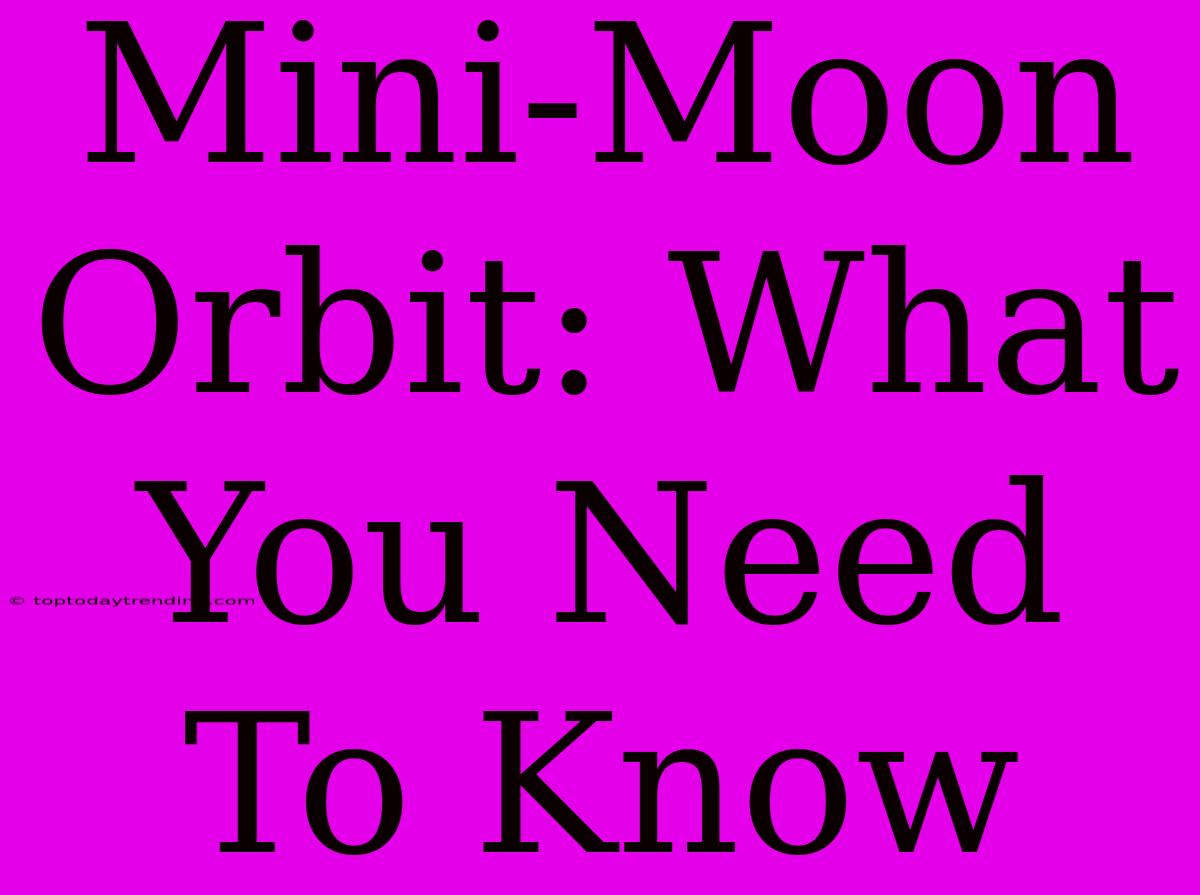Mini-Moon Orbit: What You Need To Know
The idea of a "mini-moon" orbiting our planet might sound like something straight out of a science fiction movie, but it's actually a real phenomenon! These temporary celestial companions, also known as quasi-satellites or co-orbiting objects, are small asteroids or other celestial bodies that get caught in a unique orbital dance with Earth.
While not true moons like our faithful Luna, mini-moons exhibit intriguing orbital characteristics and offer valuable scientific insights.
Understanding Mini-Moon Orbits
Mini-moons differ from our permanent moon in a crucial way: their orbits are not stable over long periods. They typically hang around for a few months or years, sometimes even decades, before being flung back into the vastness of space.
Here's a breakdown of their unique orbital features:
-
Horse-shoe Orbit: One of the most common types of mini-moon orbits is the horseshoe shape. These objects appear to "follow" Earth as it travels around the Sun. However, they're actually in a separate orbit that slightly overlaps with our planet's path. The gravitational interplay between Earth and the mini-moon creates a visually captivating horseshoe pattern.
-
Quasi-Satellite Orbit: Imagine a mini-moon dancing around Earth, always keeping a certain distance while maintaining a near-constant position relative to our planet. This is the essence of a quasi-satellite orbit. These objects maintain their relative proximity due to the interplay of gravitational forces.
What Makes Mini-Moons Interesting?
The temporary nature of mini-moons makes them intriguing objects to study. Their existence offers a window into the dynamics of the solar system and can help us better understand the gravitational forces that govern celestial movements.
Here are some key reasons why mini-moons are of interest to scientists:
-
Orbital Dynamics: Studying the dynamic interplay between Earth and mini-moons provides valuable data on gravitational interactions and helps refine our understanding of orbital mechanics.
-
Origin and Composition: Analyzing the composition of mini-moons can reveal clues about their origin and the conditions prevalent in the early solar system.
-
Potential for Exploration: While mini-moon exploration poses significant challenges due to their temporary nature, future advancements in space technology could potentially enable closer study and even sample return missions.
The Search Continues
Scientists are constantly on the lookout for new mini-moons. Advancements in ground-based and space-based telescopes, alongside advanced data analysis techniques, are making the detection of these temporary celestial companions easier than ever before.
The discovery of mini-moons is a reminder of the vastness and dynamism of our solar system. These temporary companions provide valuable insights into the complex gravitational interactions shaping our cosmic neighborhood and offer exciting opportunities for future scientific exploration.

